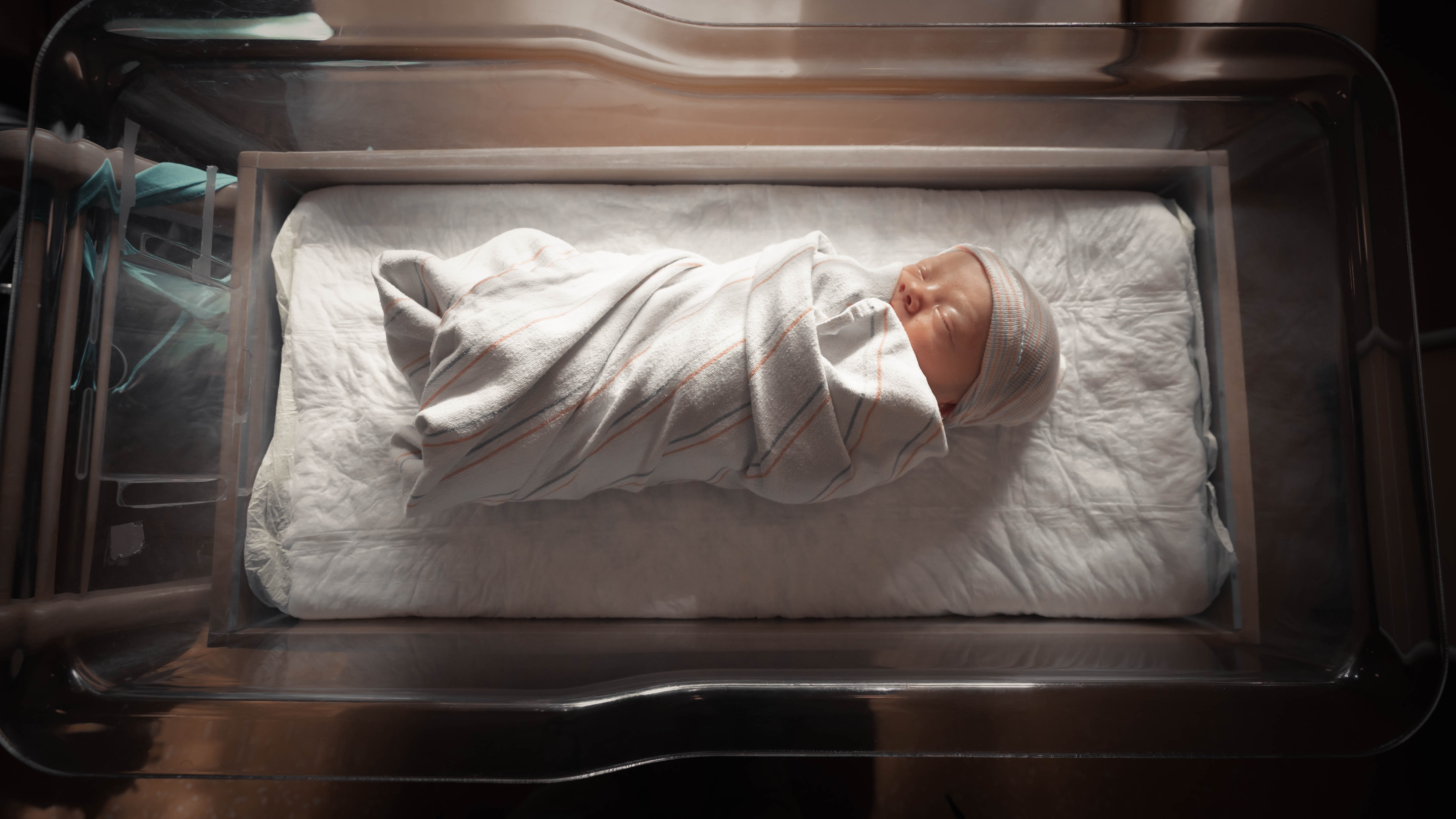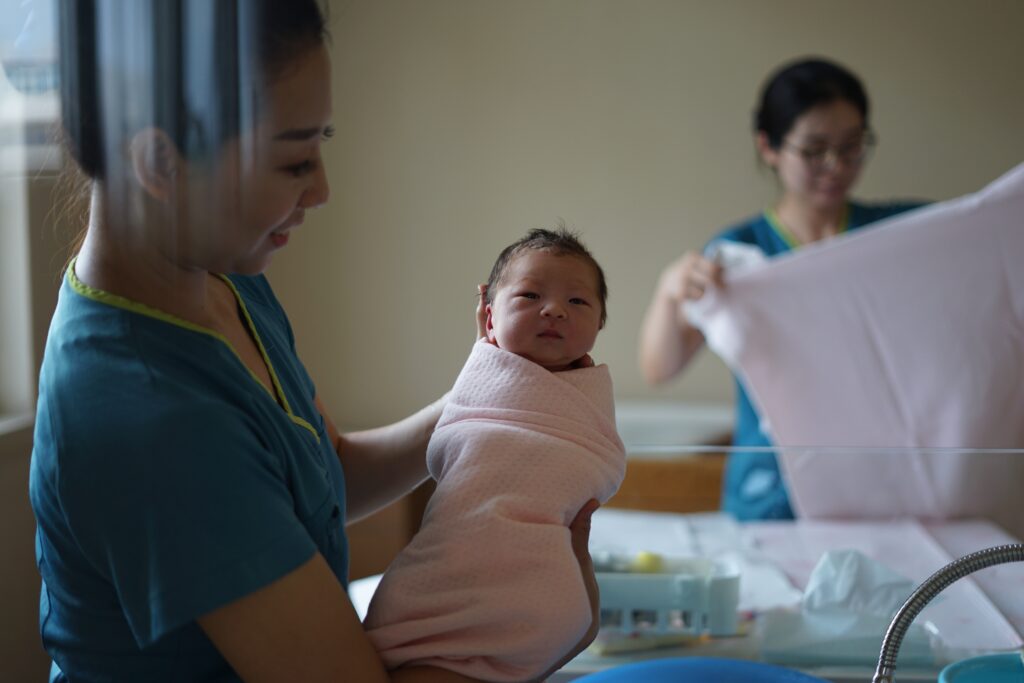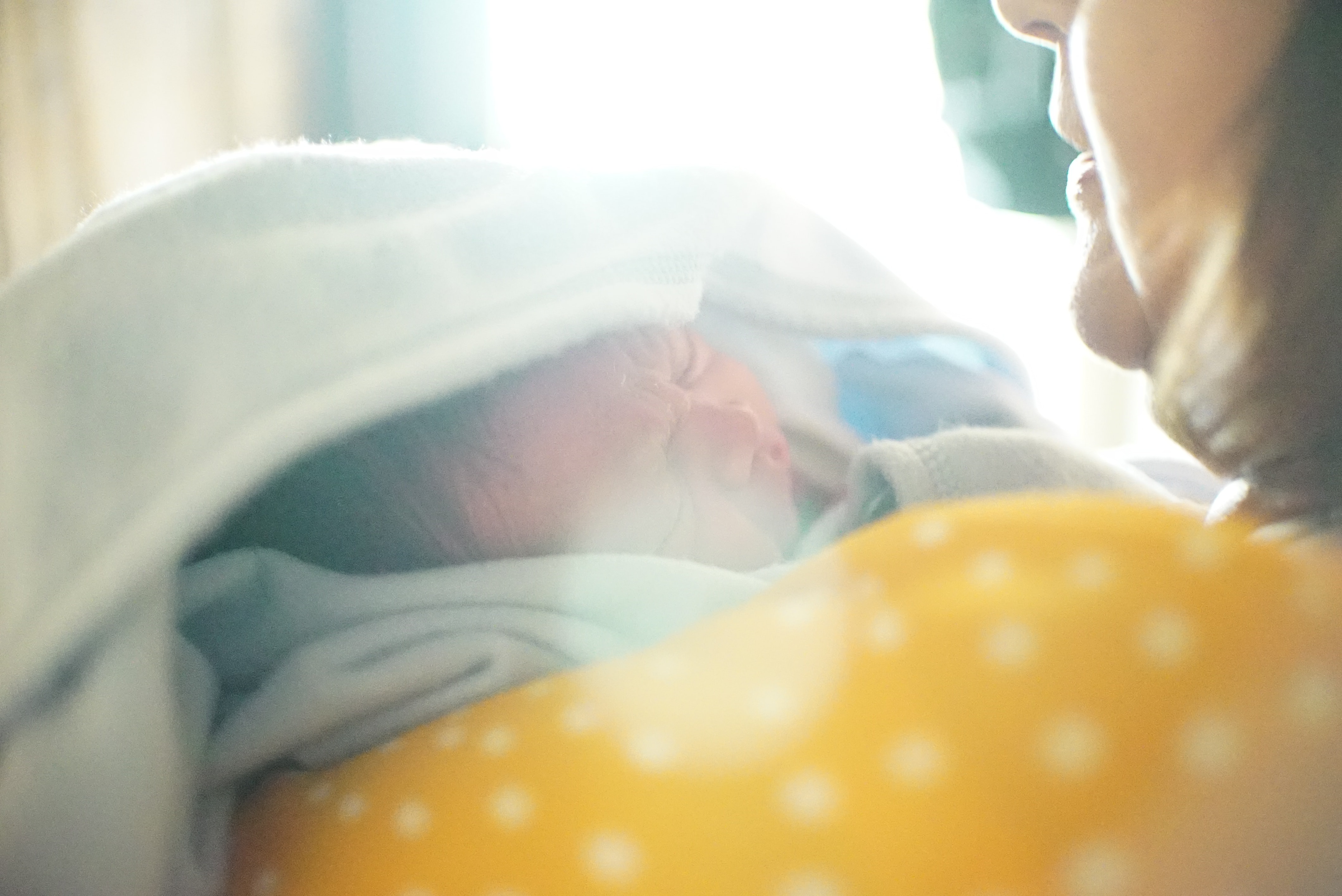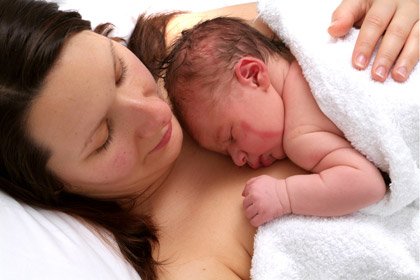After the Golden Hour and through Hospital Discharge

The concept of early STS contact and limiting infant separation is not constrained to the Golden Hour. Although rooming-in became a best practice after WW2 and offers a family-centered care model, some nurses maintain the perception that the infant is safer in the nursery (Feldman-Winter & Goldsmith, 2016). This resulted in the regular practice of separating the infant and mother without consideration of the impact of the practice dyad.
Photo Credit: Jimmy Conover https://unsplash.com/photos/LtKoW6kh2eE

According to Barrera, Boundy, & Perrine (2018), as many as 50% of infants are separated from their mothers for a variety of reasons, including hearing tests, heel sticks, baths, pediatric rounds, and infant photos (Barrera, Boundy, & Perrine, 2018). Furthermore, separation has a negative impact on breastfeeding and milk production; it interrupts cluster and demand feeding, resulting in a delay in milk production and low milk volume (CDC, 2020).
Photo Credit: dx-www https://unsplash.com/photos/W6MGOy0QRjs
Benefits

All the benefits gained during the Golden Hour continue if STS and rooming-in are promoted. Rooming-in empowers the mother in providing infant care; mothers learn to recognize feeding and satiety cues; and infants are safer because they are less likely to be abducted or abandoned (Feldman-Winter & Goldsmith, 2016).
Additionally, infants who experience neonatal abstinence syndrome, a set of symptoms brought when the infant is exposed to illicit drugs in utero, have better outcomes when allowed to safely room-in and participate in STS contact with the mother (Feldman-Winter & Goldsmith, 2016).
Photo Credit: Jorge Dominguez https://unsplash.com/photos/OkvrBNhgfEo
Contraindications

As mentioned previously, the safety of the mother and infant are paramount. Maternal or infant acuity is prohibitive to rooming-in until both are deemed stable. As with Golden Hour care, STS and rooming-in should be accommodated once it is safe to do so. Additionally, mothers recovering from Caesarean section should be enabled to participate in room STS while rooming to the level of their ability provided they have family available to help monitor her (Feldman-Winter & Goldsmith, 2016).
Image Credit: http://clipart-library.com/images/kc8kj7koi.png
Barriers

Nursing culture and education impacts successful rooming-in for the dyad. According to Barrera, et al (2018), nurse’s perceptions of safety are a primary reason they encourage separation, citing concerns about maternal sedation from medication and mothers falling asleep while breastfeeding, putting infants at risk for suffocation or falls.
Hospital room layouts and social concerns for roommates are another barrier. For example, in hospitals that offer semi-private rooms and double up couplets, one mother may request her infant to go to the nursery causing her roommate to make a similar request in order to avoid being disruptive (Barrera et al., 2018).
Image credit: http://clipart-library.com/clipart/1090526.htm
Interventions

Nurses are integral to promoting breastfeeding success as new mothers need empowerment and encouragement. Nurses must promote maternal-infant attachment in the postpartum period, and resist the temptation to separate the dyad for matters of convenience or procedure; for example, STS contact can be encouraged during painful procedures, such as heel sticks, because it decreases infant discomfort (Feldman-Winter & Goldsmith, 2016).
Photo Credit: Janko Ferlic https://unsplash.com/photos/Nrj19cFi6OE/info

Additionally, nurses can reduce the interruption of sleep and bonding processes by clustering care, doing routine assessments and procedures in the mother’s room, reserving separation for instances of medical necessity; if separation is needed, the parents should be encouraged to accompany the infant (United States Breastfeeding Committee [USBC], 2013).
Photo Credit: http://www.parenting-with-love.com/kangaroo-mother-care-the-magic-of-a-mothers-touch/
Enjoy this video demonstrating Skin to Skin care while rooming in.